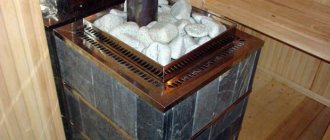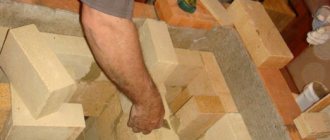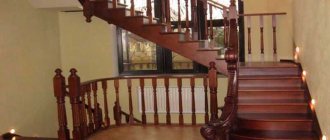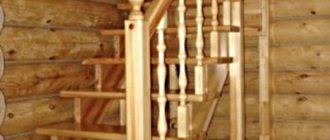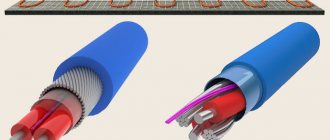The designs of heating devices operating on solid fuels are constantly changing and improving. New parts are installed, components and mechanisms are added, which makes it possible to achieve greater productivity and efficiency of thermal devices. The grate for the furnace is the part that cannot be dispensed with in any design, regardless of its type and size. The product can be purchased at a retail chain or, if you have the tools and skills, you can make it yourself.
Types of grate
Material
The temperature in the furnace is quite high, which forces craftsmen to make grates from special metals:
- The most durable is a cast iron oven grate.
- There are also steel parts, the most popular of which is antipyretic steel. Such grates are not susceptible to oxidation and corrosion when the flame burns, and also do not deform. These devices can have different sizes and shapes, the abundance of which makes it possible to choose a grate even for a non-standard stove model.
Example of a grate for a furnace
Solid and stacked
For convenient use, you can choose different grate designs:
- Solid. They look like monolithic gratings; they cannot be broken down into smaller components. Most manufacturers have standard oven grate sizes, focused on the most popular oven models. The choice of sizes of solid parts is quite large. Preference should be given to a certain product taking into account the fuel surface area.
- Stacked grates. They have a collapsible shape and can be assembled independently. The number of their components depends on the required area of the device. This guarantees their versatility, because the oven grate can be made in any size and is suitable for non-standard ovens.
Fixed
Fixed devices are grilles that do not move.
Subtypes of fixed grate:
- tiled flat, the most popular;
- basket, rarely used;
- beam
Tiled - these are rectangular-shaped parts and are the most popular. They can be used for any model, they are universal and easy to install. The stores offer a huge selection of grates of this particular type.
Basket grates are not very popular, because they are used for open ovens. In the old days, they were components of ovens on which food was cooked. Nowadays gas and electric stoves are used for this.
Beam gratings visually resemble a construction beam. They are assembled only by hand. Consumers like them for their versatility and the ability to install them in any oven.
Movable
Subtypes of movable grate:
- full-rotary;
- swinging;
- chain
Movable furnace grates consist of several parts. These include sections and shaft. Thanks to the possibility of rotation, the process of cleaning ash is simplified. Movable gratings are divided into full-rotating and swinging: the angle of inclination of the first is 180 degrees, the second can rotate from 30 degrees. Another type of such gratings is chain. In its design, the elements are connected to each other by chains. The disadvantage of this type of grate is the incomplete combustion of wood or coal.
A little history
Previously, firewood was burned on a blind hearth - combustion air was supplied through a slightly open fire door. This method has a fire hazard - coals may fall out of the firebox. It is also difficult to accurately select the optimal combustion mode - the regulator is very rough. The ash that covered the coals over time also did not contribute to the normal combustion of fuel - it is an excellent heat insulator (in the combustion chamber of a Russian stove, this is exactly how coals were stored in the ash for the next kindling). Therefore, they began to install a grate - a grate on the hearth through which oxygen enters the combustion zone. The ash is also removed through the grate - nothing interferes with the combustion processes.
The absence of a grate or its damage is not critical - the stove operates without it. True, the efficiency is somewhat lower. And the zone of intense heating of the masonry moves below the hearth - now the base of the ash chamber is also heated. And here you need to be careful if the stove is installed on a wooden base.
Dimensions
Another condition for choosing a grate for a stove is its length and width. The sizes of the grate for the furnace are different, they are determined by the type of fuel:
- For light firewood or briquettes, grates from 140x120 mm to 330x252 mm are sufficient.
- For coal, larger parameters are needed: 300x300, 350x300, since this fuel emits a large amount of harmful substances when burned.
Variety of grate sizes
KROK
In the manufacture of individual modern structures, heat-resistant pipes of various diameters are used. KROK grates (or, in other words, grates of cooled structures) can rightfully be considered a novelty in the field of thermal power engineering. They are used for hot water furnaces and boilers and are characterized by increased temperature resistance (can withstand temperatures up to 1000 degrees Celsius), a wide range of uses and a very long service life. They also differ in that the working fluid circulates in the pipes, which allows you to significantly save money.
The same grate bars that are intended for use in mechanical combustion chambers are integral parts of grate cloths.
Buying tips
For high-quality combustion, not only the size of the grate is important, but also the weight of the fuel that it can withstand in one laying. The rods should not deform or wear out.
The grate must have a sufficient number of holes - at least 40% of the area of the part itself. If this figure is lower, then there will not be enough oxygen to maintain the fire, and the ash will remain on the grate and clog the stove.
If the gaps in the grate have a large area, then the remaining fuel will fall from the combustion chamber into the ash pan. Fuel consumption will become uneconomical.
Optimal lattice option
How to know a good grate stove
On the website of our company you will definitely find a scorching unit with the characteristics you need for your application. If your choice is not correct, please consult your manager. We have proven fakhivts that will give professional satisfaction.
We have 10 successes in this area and have a seemingly unsurpassed reputation. Therefore, you can feel free to make a request - in our assortment there are only clear products from the customers’ opinions. You are rejecting our extensive guarantee, and our prices will please you.
We organize prompt delivery to any population in Ukraine. There are discounts and promotions for our clients, if necessary, we can issue a cancellation.
What is needed for production?
It is possible to make a grate with your own hands. What to make a grate for the oven from? It is better to use heat-resistant steel as a material, because it is impossible to work with cast iron at home. To make the grille, you can use any materials that have heat-resistant characteristics. This could be fittings, corners, steel pipes or strips of metal.
To make grate bars you will need:
- the metal from which the grille will be made,
- steel rods for creating partitions;
- ruler, tool for making marks;
- grinder for cutting material;
- welding.
Stacked and solid options
In different furnaces, the fireboxes may differ not only in size, but also in shape. In this regard, grate manufacturers produce a wide range of products, so you can choose grate bars for even non-standard shaped fireboxes.
By structure they are distinguished:
- Solid cast grate bars . In this case, a product is produced that cannot be disassembled into parts. They are produced in several standard sizes, so when selecting a product you need to rely on the total area of the fuel chamber of the furnace.
- Prefabricated gratings are assembled from several parts. From these components you can assemble a grate for a furnace of the desired shape and size.
How to make grate bars for a stove with your own hands?
From reinforcement
It is not difficult to make a grate from reinforcement yourself. It is enough to select the desired length of the product and cut the reinforcement with a grinder. It is necessary to determine the number of strips and take into account clearances for ventilation.
When the required amount of material has been prepared, you can begin welding the grate using rods. Do-it-yourself grate bars for the stove made from reinforcement can be seen in the photo below:
Video instruction:
From the corner
Making a grate for a stove with your own hands from a corner is even easier than from fittings. To do this, it is enough to weld two corners of the required sizes together: one side is equal to the width of the product, the other to the length. The result will be a rectangular base for the future part. The grate can be made from reinforcing bars or thick mesh.
Video instruction:
Ways to solve the problem
If the grate is damaged, there are two options: fill the ash chamber with a brick or install a new grate.
The option of filling is acceptable only if the integrity is damaged or there are cracks and it is impossible to eliminate them at the base of the ash pit. At the same time, it would be good to replace the firebox door from a blank door to a door with a grille to regulate the flow of secondary air. But this option will definitely create a lot of unnecessary trouble and reduce the efficiency of the furnace. Therefore, we change the grate.
The grate is usually made of cast iron. Cast iron is very different from brick in terms of CTE - coefficient of thermal expansion. This indicator for iron is much higher than for ceramics. Therefore, the grate is always placed freely with a gap of 5-10 mm around the entire perimeter. Some manuals recommend filling the gaps between the masonry and the grate with sand. But this is very stupid advice. Unnecessary and even harmful. Firstly, the sand from the heat of the coals (and it can reach 1100 degrees Celsius) simply sinteres - vitrifies, tightly welding the grate to the masonry and depriving it of the necessary freedom. Secondly, after the first fire, this gap is filled with ash - a non-flammable and non-caking material. So why make unnecessary movements?
It is important to place the grate correctly - an inverted grate quickly becomes clogged with ash and stops working. Therefore, we remember that the grate slits expand downward, not upward. Sometimes the grate has a thickening in the middle - this is to equalize thermal stress, and not to roll the coals to the edges, as some people think.
The figure shows the correct (bottom) and incorrect (top) position of the grate
Usually the grate is placed in a brick trough or in grooves selected in the brick. If the integrity of these grooves is damaged and it is impossible to restore them, you will have to come up with some kind of supports. Sometimes they try to get out of the situation by driving nails, metal plates, etc. into the seams of the masonry. All this is in vain - the metal is quickly tempered and ceases to hold the grate, and more massive pieces of iron are unacceptable - they will tear the masonry.
How to install grate bars in the oven with your own hands?
To install the grate in the furnace, it is not necessary to call a specialist. You can do this yourself, spending very little time and effort on this process.
Installing a grate in a brick kiln has its own characteristics:
- You need to understand that metal tends to expand. Therefore, you need to make gaps of at least half a centimeter along all edges of the product.
- The grate should be placed a little lower (about one brick) from the firebox door. This will prevent heat from escaping from the oven.
Stage 1
Stage 2
Stage 3 - Do not pack the grates too tightly into the oven. This can lead to deformation and cracks when the metal is heated.
- The gap between the grate and the stove is filled with sand. It is important not to use cement admixtures, because the part should not be held tightly.
Does it matter which side the grates are placed in the oven? Yes, when the grill bars have a triangular or any other protruding shape, the top should point down.
Examples of installation in a brick kiln:
Example 2
Example 3
Example 4
Example 5
Design features
Heating of the room from a wood-burning stove is carried out by heating the brickwork of the stove during combustion
The burning interval of wood is short, so it is important to use the generated thermal energy as efficiently as possible
Horizontal wells in the chimney of a brick stove enhance the heat transfer of combustion products. If the vertical chimney has minimal contact with gases and smoke, then the horizontal sections slow down their removal, forcing them to come into contact with a large area. The stronger the draft of the smoke exhaust channel, the more intense the fuel burns. The slower the smoke passes through the chimney, the more heat remains in the room.
The design of the horizontal chimney is a vertical snake. Each turn is called a revolution, and the chimney itself is called multi-turn. The passage of smoke through such a coil should be as free as possible so that the effect of smoke being sucked back into the room does not occur.
Design features of a horizontal chimney:
- the channels are built the same size throughout;
- horizontal sections have a length of up to 1 m;
- the total length of horizontal channels should not exceed 3 meters;
- horizontal sections have a small angle of elevation in the direction of smoke exhaust;
- on turns, corners are made rounded so as not to provoke the formation of gas vortices;
- the inner walls must be smooth; protrusions and irregularities are not allowed.
It should be understood that it is better to entrust the construction of an effective and safe chimney to professionals. To install a horizontal chimney, you will need a competent engineering design that takes into account the features of the internal design and the correct external outlet of the chimney. This takes into account the height of the pipe, its location relative to the roof ridge, and even nearby tall buildings or trees.
Price policy
A quality product cannot have a low price. High-quality cast iron parts that will last for many years are expensive. And vice versa, light and cheap ones, made from a mixture of unknown materials, will quickly become unusable.
Approximate prices for furnace grates:
| Size | Price |
| 800x200 mm | 1200-1600 rub. |
| 915x250 mm | 1100-3000 rub. |
| 260x540 mm | 400-500 rub. |
It is better to buy these products in specialized stores. They provide a wide selection of models with different materials and price categories. Consultants will help you make the right choice based on your preferences, the nature of the fuel, and the frequency of operation of the heating device.
Types of grates
Grate grates are divided into several varieties according to different criteria.
So, they can be divided into monolithic and typesetting.
— Monolithic models of gratings are more common, they are much easier to install - they immediately fit into a nest prepared for them of the required dimensions. The wide range of shapes and sizes of gratings on sale most often allows you to get by with just this option.
Options for monolithic and prefabricated grate
— Prefabricated grate bars are assembled into a single structure directly at the seat. These can be modules with two or three jumpers.
A prefabricated grate is convenient in cases where the bottom of the combustion chamber has a complex geometric shape, that is, it should be narrower in one place and wider in another.
This also includes the so-called beam grate - this is also a stacked version, consisting of individual crossbeams. The elements of the beam grille must pass freely and be removed from the combustion chamber through the open door. Actually, if you look at it, it is precisely such a separate beam that is called a grate.
Prices for grates for ovens
grate bars for the furnace It is from these individual parts (grid bars) that a prefabricated beam grate is formed
In practice, monolithic grates, if necessary, can be combined with stacked elements, in the case of the same non-standard shape of the combustion chamber.
The slab grate has a flat shape (usually rectangular, although there are also round grates). This product option is suitable for most solid fuel heating appliances - stoves, boilers, fireplaces. The slab grate is selected in accordance with the furnace design, which specifies the parameters of the seat.
Basket grate “Riva Grate”
Basket type grate. This type of grate was previously widely used in fireplaces with open hearths. It is convenient because the firewood being laid is not on the surface of the grate, but as if inside it, without the risk of falling out through the open hearth. But at the same time, air access to the fuel is completely preserved.
Nowadays, basket grates are no longer used in fireplaces so often, since many home owners prefer mainly closed combustion chambers with panoramic glass doors. However, such grates are also available for sale. In addition, master blacksmiths willingly accept orders for their production according to individual projects. And then the basket grate also becomes a decorative part of the fireplace.
Basket grate for the fireplace, made to order by a craftsman
A movable grate is usually intended for long-burning furnaces. The structure may consist of a frame and a grille installed in it on the axis. Another option is gratings with horizontal movement. Changing the position of the grate helps its self-cleaning - it helps to loosen slag or ash deposits and remove them into the ash pan chamber. In some cases, movable grates also change the geometry of the channels for incoming air, which is used to control the operating modes of the furnace.
One of the design options for a movable grate
There are models with sections rotating 180 degrees. However, this design must be included in the furnace design, since such movement of the grate requires special recesses in the brick wall. Therefore, these models have limitations in application and are quite expensive.
Separately, it is worth highlighting the cooled type of grate, which is usually installed in hot water boilers or furnaces with a water heating circuit. In another way they are called “KROK” - “cooled grate”. This version of the product is made from monolithic heat-resistant pipes in which the coolant circulates, cooling their surfaces. Thus, the firebox maintains a temperature that ensures safe operation of the unit, and the heating system receives additional thermal potential.
Diagram of a KROK-type grate
Most often, the production of such grate structures uses rectangular or square pipes in cross-section, located in parallel, with a pitch of 15÷20 mm. In the interpipe space, at a distance of 20–30 mm relative to each other, sections of steel rods are welded, which are compensators for the rigidity of the grid. On one side, the grid pipes are connected to a collector that supplies cooled coolant from the “return” pipe of the heating circuit, and on the other to the outlet pipe, through which water then flows into the main heat exchanger of the boiler.
Conclusion
When choosing a high-quality grate, you should take into account the design features of the stove. The choice of a specific design and lattice components depends on the nature of the fuel. A grate for a sauna stove made of cast iron will last longer than the same one made of steel or other metals.
The weight of the fuel itself is also of great importance. Installing gratings does not require special knowledge. You can correctly place the grates in the oven yourself; it is enough to take into account only a few nuances. With the right choice of material and installation, they will last you a very long time.
Grateless stove (BKP) with a “Buleryan” damper
In essence, this is a potbelly stove, but without a grate. It is included in our classification because it is more effective and requires the qualifications of a master. Despite the fact that such a stove uses fewer parts than a potbelly stove, it has one difficult-to-make element - the firebox door. This element is the only one fundamentally similar to the parts of “Buleryan” (but at the same time the most important). The door must close hermetically; it is combined with a supply channel (blower).
Design. Steel firebox of any shape - cube, parallelepiped, horizontal or vertical cylinder - with a "Buleryan" type door in the front lower part and a chimney in the rear upper part.
Effect. In a grate firebox, oxygen for combustion is abundantly supplied to the hearth from the space under the grate from all sides. This leads to intense combustion and rapid temperature reduction by a cold stream of fresh air. As a result, unburned food is discharged through the chimney.
Without a grille, oxygen passes only through the supply channel, which is quite precisely regulated. As a result, the burning time increases and the products decompose better. At the same time, hot gas lingers longer in the firebox and heats the walls more efficiently. As a result, more heat remains indoors.
Recommendations
The fuel material must be completely burned, and to achieve this goal, an optimal amount of oxygen must be supplied. Therefore, the total area of the distance between the grates is no more than 60% of the total area of the grate. If the distance is smaller, a small air flow will enter the stove; this will not be enough to maintain the combustion process in the combustion chamber.
If the distance between the grates is large, the fuel material will fall without having time to burn out. This will lead to an increase in combustion consumables.
The cast iron grate for the stove provides good traction and is used for burning wood, coal and fuel briquettes. Cast iron still occupies a leading position in the manufacture of grates. Since it is least susceptible to deformation at high temperatures.
Basic installation steps
When working to install your chimney through a wall, you need to remember important rules and installation steps. You should adhere to consistency so as not to forget anything and do everything correctly. So, install the chimney, steps:
Check if there are any communications passages through the wall. Make markings and prepare a hole of the required diameter. Install a “pipe”, which you carefully seal and insulate heat from the wall, with a special fire-resistant material. A special casing can be installed on top. The pipe is connected to the boiler and stove using three terminal “elbows”
The lower part is required; using this outlet you can carry out cleaning. The outer section of the second “elbow” behind the wall needs to be secured; it is important to remember that the horizontal planes should not exceed one meter. Next, the vertical part is installed. Pay attention to the fastening, use only high-quality fasteners.
Chimney diagram
After erecting the entire vertical part, you need to know how to install the head, the so-called cone-shaped cover, which will help improve traction and protect the channel from clogging. Depending on the type of duct, you will need to insulate and insulate the space between the wall and the pipe.
Tile grate
One of the most common types of grate is the tiled grate. The main feature of this design is the observance of strictly fixed dimensions. This grille is designed for an installation site of a certain size.
A mandatory condition must be met - the presence of a gap between the outer perimeter of the grate and the walls of the firebox of at least 5 mm. If this size is not maintained, the cast iron grate may expand greatly when heated and damage the firebox.
Blower
The vent is the first air chamber in the furnace, which usually has a door. The blower chamber is laid out according to the dimensions of the grate. It can be wider than the grate and overlapped by overlap of rows of side walls up to the grate. Through the ash chamber, air enters the firebox through the grate; in addition, it serves to collect ash and other fuel waste.
Blower: 1 - blower chamber; 2 - blower door
The blower door can be of any size, but no larger than the blower door. Through this door it is convenient to remove ash from the wide ash chamber, and as for air, there is enough of it with a door even half as small as shown. Practice has shown that the best place for the blower door is on the second row of the stove masonry. The door is installed in the blower window, which is connected to the blower chamber. When the door is open, air rushes through the window into the ash chamber. The more the door is open, the more air will enter the ash pan and the better the fuel will burn. Air, especially coming from below, is needed to maintain fuel combustion. Hence the name - blower.
Sometimes the door is used to regulate the draft in the oven: the less the door is open, the less draft. It is not necessary to install a blower door, but it is advisable, because without it a draft can occur in devices that do not close tightly, such as valves. And then the heat will go out into the chimney, and the stove will release less heat into the room.
If there is no door, the draft is adjusted using a valve. The more the valve is open, the stronger the draft, and with it more air will enter the stove and the draft will be stronger, which means the fuel will burn better. If there is no door in the ash window, but there is a view, then the fuel will constantly burn with the same intensity, but with this intensity a lot of heat will go into the pipe, which the brick could absorb. The viewer cannot regulate either thrust or fuel combustion.
Let's say that the door is a few millimeters smaller than shown in the figure. In any case, the seams should be no more than 3-5 mm. To do this, the laying must be carried out from the door to the corner of the stove. The last seam turns out thicker than expected, and such a seam cannot be made. To maintain the thickness of the seams, you need to break off a quarter from a whole brick in the corner of the wall where the door is located. You will get a three-quarter and a quarter. Next, you need to break off a larger quarter, taking into account the thickness of the seam. It will seem to lengthen the whole brick. Instead of a whole brick, you need to put the first three-quarter and the second quarter - it will take the place of the thick seam. The masonry of the top row above this quarter will be made of a whole brick - it will block this quarter. If a thick seam is obtained near the door, then you need to do the same in this place.
If, because of the door, the firebox turns out to be several millimeters narrower and the flues are wider, then this will not affect the operation of the stove. In some areas of the country, stoves are installed without a blower at all. In these furnaces, the combustion doors have windows-openings for air intake instead of a blower. In such fireboxes, only wood and peat fuel burns, but the firewood is buried in ash and forms a lot of firebrands. When they burn out, the heat goes into the chimney, so the firebrands have to be pulled out of the firebox and placed in a bucket of water. Such ovens are made due to the lack of grates. If they exist, then they are installed above the blower chamber.

